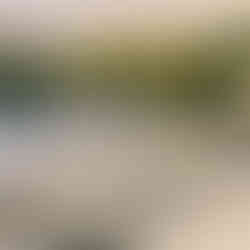Exercise 4.4 Deconstructing colour as yarn
- Juliet
- Jul 12, 2019
- 2 min read
Updated: Jul 20, 2019
Aim
select and explore new and appropriate making and deconstructing techniques to translate lighter and more transparent qualities into your yarns.
I referred to my watercolour stripe patterns taken from still lifes of translucent and transparent glass in Exercise 3.3:
Initially I thought about the kind of techniques and materials that I would use and which techniques would make the materials more transparent or 'see-through':
My approach to this exercise was to assemble lots of materials using deconstruction and decolouring techniques, then find ways of reconstructing and combining them to make new yarns.
I started by cutting things up to create a range of materials, some of which I used later:
Removing colour from fabric using bleach:
Removing colour from fabric using decolorant:
Deconstructing fabric to make them more transparent:

Removing colour from tissue paper and transferring onto white paper, then reconstructing the sheets of paper into 'yarn':
Adding colour to and peeling into layers using silk mawata handkerchief. Here I took a step back and thought about ways of making the Brusho pigment move around on the fabric, in order to become more intense in some areas than others, in order to echo and exaggerate the movement of the watercolour paints on paper in the stripe design. I used salt to draw the pigment into certain areas, first on paper and then on the silk. When dry, I peeled away a layer of the silk to make the material lighter and more translucent:
Combining a layer of the coloured silk with a strand of plastic water bottle yarn:

Exploring plastic materials to create yarns, using Scoobie strings knotted, combined with beads made from deconstructed straws, and a deconstructed ice cream tub, cut into a long strip:

Chiffon ribbon that has been treated with decolorant, then combined with another translucent material (strips of blue food factory hairnet) to form a new yarn:
Interpreting the watercolour striped using slightly deconstructed wool tops, white hairnet and knitting wool:
After making these yarns, I recorded and reflected on the deconstruction of yarn during a mark-making session using cola pens and black ink:
During this exercise I also reflected on the difference between a yarn design and a yarn concept and decided that for my purposes a yarn design needed to be usable in some way, whereas a concept did not need to be practical, but could be more extreme, and lead on to the design of a yarn that could be practically used,
Here are my final yarn designs and concepts for this exercise:
Not all the materials I deconstructed or altered in some way were used to form the yarns in this exercise, but were kept for future use.
I further reflected on the stripes designs using collage, which could lead in another direction in the future:

And recorded some of the outcomes in sketching:





















































































































Comments